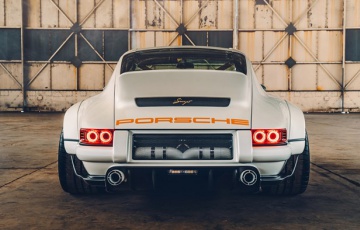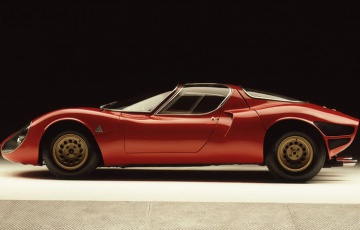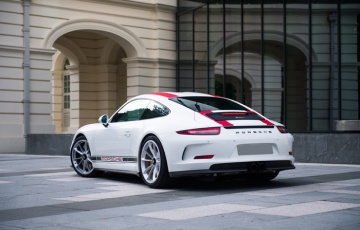Porsche 911 Turbo S vs 911 Carrera 4 S vs 911 GTS
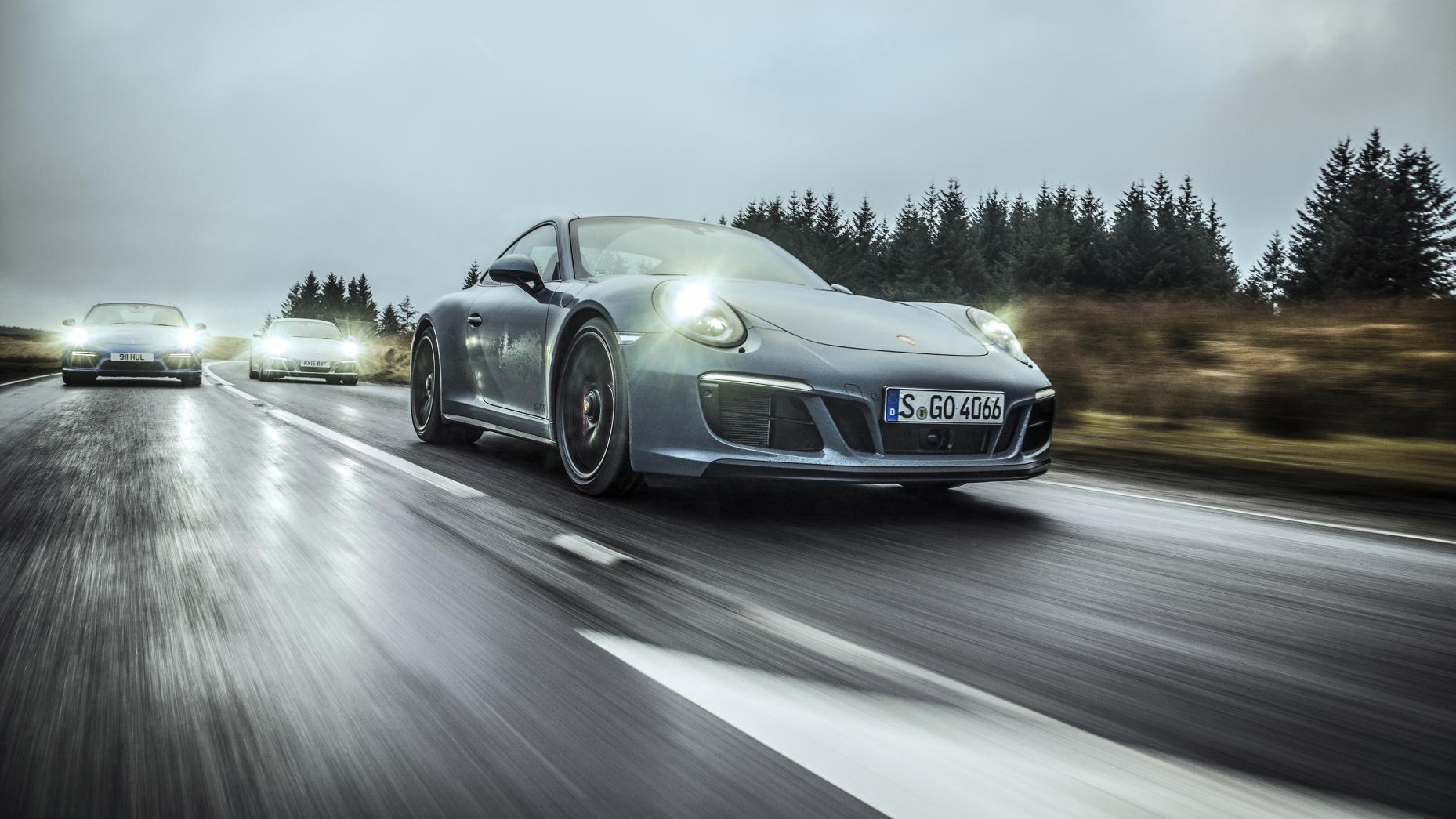
I wouldn’t call it rain per se, more like the air is sagging under several gigatonnes of moisture. There’s barely a puddle, but the roads are offering all the adhesion of a greased otter, and I appear to have early onset cataracts because visibility is limited to the few feet in front of my face.
Out there, somewhere, is the B4560 littered with sheep that skipped the health and safety briefing and other traffic, probably. Yet I’m still getting frothy at the prospect of the three mud-splattered cars in front of me: all turbocharged, all 4WD, all with different degrees of insanity hunkered over the rear axle. Three marker posts in the sprawling 911 range.
Picking a Porsche 911 to buy these days is like choosing which member of the Swedish volleyball team to take out for a drink; it’s the kind of problem you’re happy to have, there isn’t a dud among them, but there is a positive swarm of possible engine, body and chassis combinations that require some careful navigation. Especially so since the updated GTS 991.2 family, now sporting the thrustier new turbocharged 3.0-litre flat-six, has arrived.
Taking into account the Coupes, Cabriolets and Targas, two- and four-wheel-drive versions, S and non-S power outputs, and now the GTS brood (available in every bodystyle, with two- and four-wheel drive, PDK and manual), we counted 19 variants in total. And that’s not including the limited-run unicorns.
So is the GTS, as it was with the 997 and pre-facelift 991, still the darling of the range? Is it still the perfect amalgam of gently massaged performance and real-world, public road usability, or has the torquier turbocharged engine squeezed the gap between standard Carrera and Turbo to the point where the GTS has been rendered obsolete?
There are two ways to find out: crunching the numbers, and driving the tyres off a PDK-equipped Carrera 4 GTS and the two models that bracket it – a Carrera 4 S manual and a Turbo S – on one of the UK’s great roads.
First, to the configurator, because barring embroidered headrests, decals and 20-inch, satin black, centre-locking Turbo S wheels, you can in fact take a Carrera S and build a GTS in all but name.
Add PASM sports suspension (20mm lower than standard), a Sport Chrono pack, sports exhaust, Sport Design front bumper, Sports seats plus a 30hp and boost to 444hp and for the 3.0-litre twin-turbo flat-six (called a Carrera S Powerkit) and, shazam, a GTS without the badges.
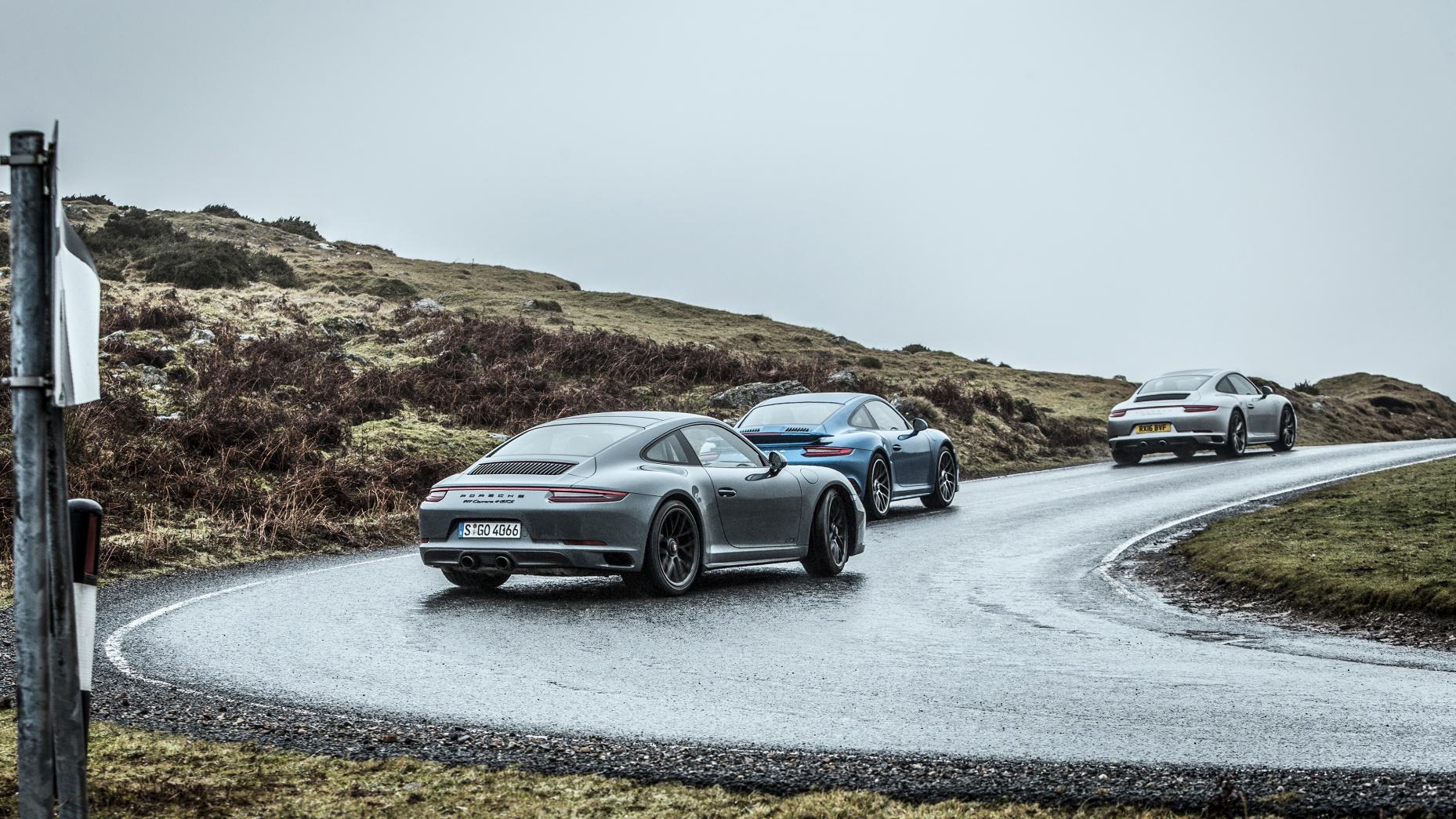
You could and probably will argue that a GTS with a manual gearbox and rear-wheel drive (but still with the wider bodywork as standard) is the racing boot enthusiast’s choice, and I’d tend to agree, but consider this: our four-wheel drive, PDKed test car is the fastest GTS available, demolishing 0–100km/h in 3.6 seconds, and given today’s weather I’ll take all the grip I can get.
Shame the Graphite Blue metallic paint is morphing into the endlessly grey sky, because in isolation it’s a delicately beautiful thing – lightly muscled beneath pebble-smooth bodywork, but with the dark lettering, exhaust tips and wheels adding just a flicker of menace.
Next to the plainer but identically proportioned C4S, the GTS trinkets and sunken stance make it look more special. Next to the winged and scooped Turbo, though, both vanish into the mist. Presented with other circa £150k supercars – Audi R8 V10, Honda NSX, McLaren 570S et al – the Turbo S is an exercise in restraint, but in all-911 company it’s the peacock of the group.
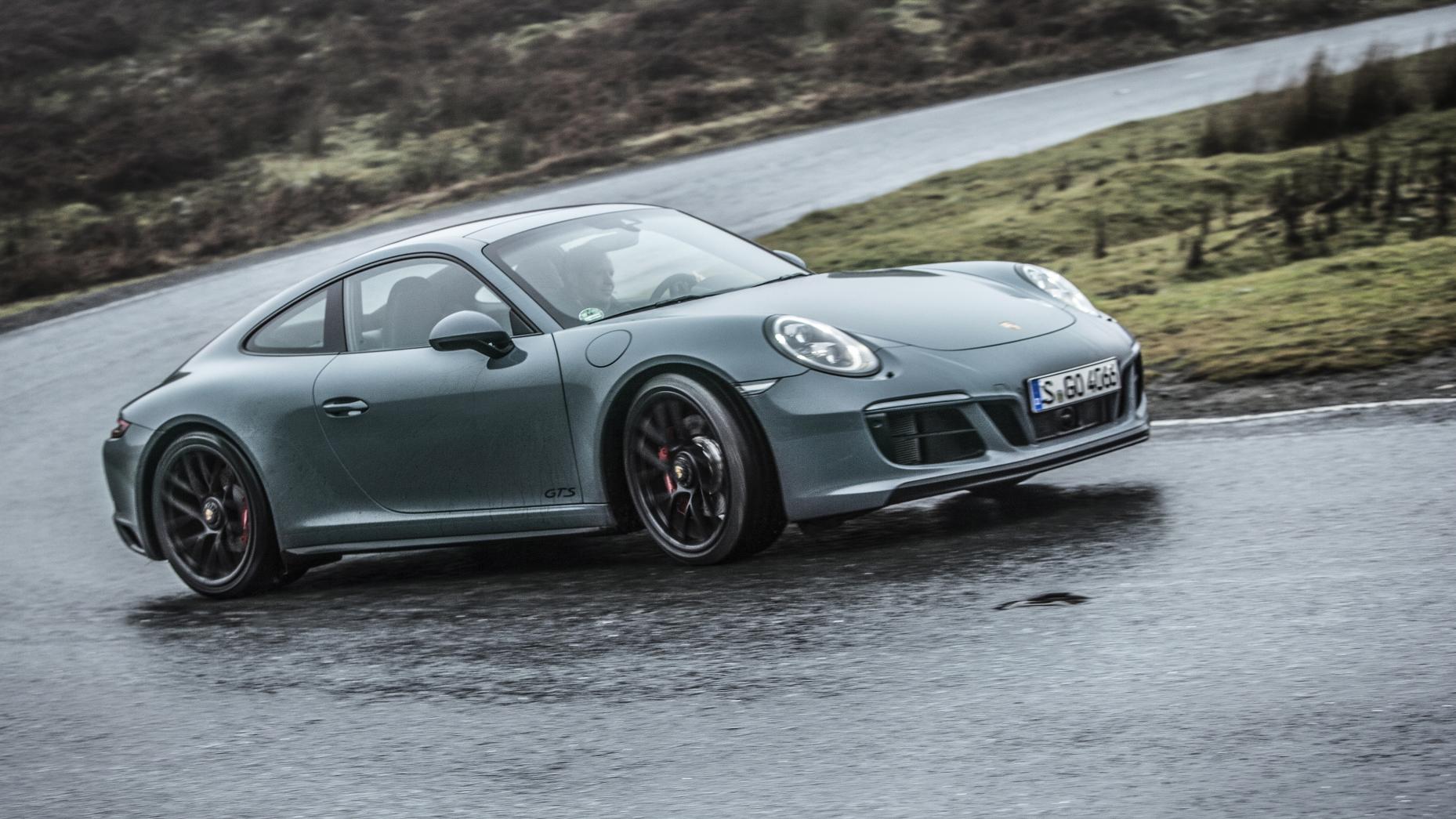
Weather improving? Not a chance. Time to face the elements then and head out first in the Turbo S – all 3.8 litres, 572hp, 0–100km/h in 2.9secs. For anyone who’s ever called this car anodyne or numb, I invite you to try one in Crickhowell on a wet January day, because within the first three corners it hangs its tail out twice, displays a deftness of touch I wasn’t expecting and, in a straight line, finds traction where there patently isn’t any. Even driven on slimy tarmac, it offers kidney-pummelling acceleration on demand.
There are definite parallels with the Nissan GT-R to be drawn here. The noise is contained, clearly clipped by the turbos, but that’s in keeping with the Turbo S’s remit to be ruthlessly, impassively efficient at going fast.
In the dry we know its surreal traction and insta-acceleration can flatter even the most spanner-wristed of drivers, but in the wet it’s a different tale altogether. It begins to feel largely rear-driven and like the heavy car (1,675kg versus 1,610kg for the 4 GTS) it is.
If I’m honest, it feels like too much engine for today, for these roads, at this time of year. Its time-warp performance, deployable whenever, wherever is unlikely to ever wear thin, but corners are being taken with my right foot hovering tentatively near the throttle.
I find myself scanning the horizon for fast-approaching livestock, rather than driving through the bends, getting the rear to squat, confident the tyres can take the vats of torque being thrown their way. Which is where the GTS comes in…

The smaller engine doesn’t have nearly the same crazed kick of the Turbo S, and takes a blink longer to wake up, but once up and revving there’s actually a harder edge to the soundtrack, and still more force than these roads and this driver can handle.
However, for brief, glorious bursts between corners I give the GTS its head – available in 2,150rpm–5,000rpm – and then let it spin further, to the 7,500rpm limiter for the hell of it. It might have lost some of its predecessor’s hollow howl at the top end, but this is still an engine that likes to stretch its legs.
We can debate the pros and cons of PDK or manual 911s, but the fact is this: The PDK gives more defined edges to the experience – upshifts on demand, later downshifts and two hands on the wheel at all times.
For a car like the GTS, that brings your bum closer to the road and seems to roll less and spread its shoulders a little wider than the standard Carrera, it’s the better fit. There’s simply more time to enjoy the way the steering squirms with the road surface, but filters out the harsh bits letting you remain unstressed and (potentially overly) confident at all times.
Stepping straight from the GTS to the S is a similar recalibration of your senses as swapping a GT3 RS for an R. The engine feels just a fraction lazier, a tenth less potent, but the whole experience more organic.
A large part of that, of course, is the manual ’box. In terms of shift quality, it’s untouchable: a frictionless, but precisely engineered action that’s deeply satisfying whether at full tilt or at a crawl. But it does force you to think ahead, brake a bit earlier, stick it in third for a corner and ride the torque, whereas in the PDK you slam it down into second just for the fizz of it.
Much of these sensations can be distilled and separated in a single uphill, well-sighted, right-hander. In the Turbo S you sense the extra weight under braking – possibly because you’re always carrying more speed than you think – then, once turned in, even a cautious blip on the throttle sends the rear shooting wide; it’s a white-knuckle ride.
Watch the relevant Chris Harris Drives video to see the sort of speeds and space required to drift a Turbo S with confidence.
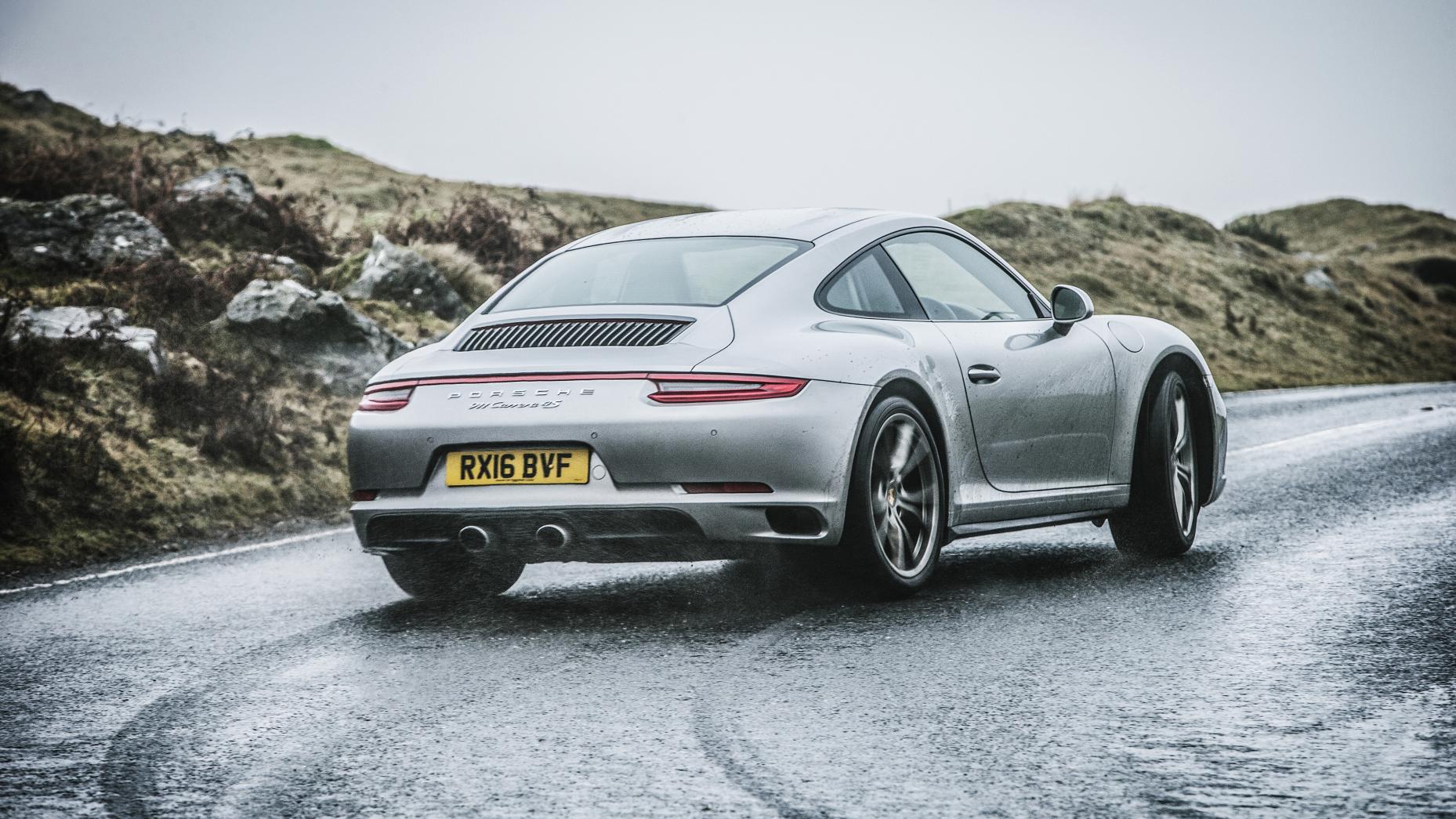
The C4 S requires significantly more commitment: a more robust bung with the steering wheel, second gear and at least half throttle get the rear tyres unstuck. But here, because everything seems to happen more slowly and predictably, you can feather the throttle and ride the slide out. By comparison, the GTS feels like it’s had a layer of bubble wrap removed: the turn-in a little crisper, the throttle a bit spikier, the slide a bit… slidier.
Strangely, though, it’s eight hours earlier that I have my defining moment with the GTS. Alone on London streets at 5am, roundabouts, chicanes, flyovers, slip roads all taken briskly, fluidly, in perfect control. I cross the patchwork quilt that is Hammersmith bridge and hear the tyres slapping the road surface, but my bum merely bobs up and down gently, cradled inside this remarkable car.
Were there compromises to the GTS’s lower stance and generally rortier demeanour then it would be hard to recommend it over the multitool Carrera 4 S, but there aren’t. It charges harder, looks better and goes about its business with more immediacy, but still doubles as the perfect everyday sports car. Living in the predominantly cold and damp climate we do, I’d even recommend going for the four-wheel-drive version too. Send hate mail to the usual address.
So does the GTS still have a place in an altogether faster 911 range? Without a doubt. Unless you like to bend the space-time continuum on a daily basis or live on or nearby a racetrack, it’s still the finest everyday 911 you can buy. You might just have to get up at 5am to appreciate it…






